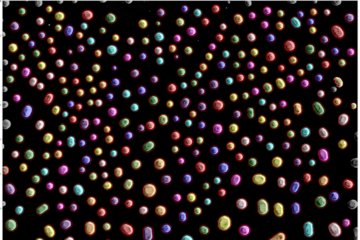All genres
861.
Journal Article
Mesoscale simulation of the kinetics and topology of spherulite growth during crystallization of isotactic polypropylen (iPP) by using a cellular automaton. (2005)
862.
Journal Article
Effect of Through-Thickness Macro and Micro-Texture Gradients on Ridging of 17%Cr Ferritic Stainless Steel Sheet. Steel Research Int. 76, 11, pp. 797 - 806 (2005)
863.
Journal Article
Phase equilibria among α-Fe(Al,Cr,Ti), liquid and TiC and the formation of TiC in Fe3Al-based alloys. Acta Materialia 53 (14), pp. 3961 - 3970 (2005)
864.
Journal Article
Hot deformation behavior of a Fe3Al-binary alloy in the A2 and B2-order regimes. Intermetallics 13 (12), pp. 1304 - 1312 (2005)
865.
Journal Article
2D cellular automaton simulation of the recrystallization texture of an IF sheet steel under consideration of Zener pinning. Computational Materials Science 34, pp. 299 - 313 (2005)
866.
Journal Article
Mesostructure of the Exoskeleton of the Lobster Homarus Americanus. Mater. Res. Soc. Sympos. Proc. 874, pp. 155 - 160 (2005)
867.
Journal Article
Discovery of a honeycomb structure in the twisted plywood patterns of fibrous biological nano-composite tissue. Journal of Crystal Growth 283, 1-2, pp. 1 - 7 (2005)
868.
Journal Article
The crustacean exoskeleton as an example of a structurally and mechanically graded biological nanocomposite material. Acta Materialia 53, pp. 4281 - 4292 (2005)
869.
Journal Article
Crystal plasticity simulation study on the influence of texture on earing in steel. Computational Materials Science 34, pp. 221 - 234 (2005)
870.
Journal Article
Mechanical properties of an ultrafine grained CMn steel processed by warm deformation and annealing. Acta Materialia 53, pp. 4881 - 4892 (2005)
871.
Journal Article
On the influence of heavy warm reduction on the microstructure and mechanical properties of a medium-carbon ferritic steel. Zeitschrift für Metallkunde 95/12, pp. 1108 - 1114 (2004)
872.
Journal Article
Development of Microstructure and Texture of Medium Carbon Steel during Heavy Warm Deformation. Acta Materialia 52/8, pp. 2209 - 2220 (2004)
873.
Journal Article
Grain boundary characterization and grain size measurement in an ultrafine grained steel. Zeitschrift für Metallkunde 95/6, pp. 513 - 517 (2004)
874.
Journal Article
Orientation dependence of nanoindentation pile-up patterns and of nanoindentation microtextures in copper single crystals. Acta Materialia 52 (8), pp. 2229 - 2238 (2004)
875.
Journal Article
Slip system determination by rolling texture measurements around the strength peak temperature in a Fe3Al-based alloy. Materials Science and Engineering A 387–389, pp. 950 - 954 (2004)
876.
Journal Article
Texture Analysis of a Coarse Grained Fe3Al Cast Alloy by Neutron Scattering. Genf-Experimental Report 2003, pp. 183 - 199 (2004)
877.
Journal Article
Numerical study of textures and Lankford values for FCC polycrystals by use of a modified Taylor model. Computational Materials Science 29, 3, pp. 259 - 395 (2004)
878.
Journal Article
Overview on the Lattice Boltzmann Method for Nano- and Microscale Fluid Dynamics in Materials Science and Engineering. Modelling and Simulation in Materials Science and Engineering 12, pp. R13 - R46 (2004)
879.
Journal Article
Crystallographic texture, amorphization, and recrystallization in rolled and heat treated polyethylen terephtalate (PET). Polymer 45, pp. 8265 - 8277 (2004)
880.
Journal Article
Experimental study on the thermal stability of Cr filaments in a Cu–Cr–Ag in situ composite. Scripta Materialia 51, pp. 915 - 920 (2004)









